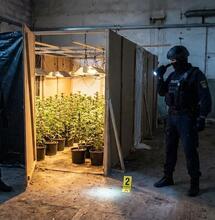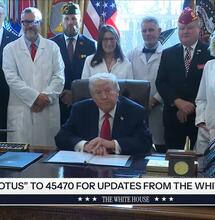The Vascular System of Cannabis Plants

Learning basic terminology and functions of Cannabis plant structures will help growers to understand how to properly maintain their crop.
Learning basic terminology and functions of Cannabis plant structures will help growers to understand how to properly maintain their crop.
|
Most of the water the plant takes up is evaporated from the underside of the leaves through the stomata |
Vascular plants include flowering plants, such as Cannabis. These are distinguished in part by their use of specialized cells known as 'xylem' to raise water and nutrients from the roots up to the leaves, and 'phloem' to transport sugars and organic compounds produced in photosynthesis around the plant from sources where they are made, to where they are stored or used. The xylem and phloem systems run throughout the plant, branching as needed so that every cell in the plant is within a few cells' reach of them.
The xylem allow plants to take up and distribute water internally via a process known as 'transpiration'. There are small openings in the outer skin of the plants called 'stomata'; most of the stomata are concentrated on the undersides of leaves. These openings allow for carbon dioxide (CO2) to enter for use in photosynthesis, and enable oxygen (O2) and water vapor (H2O) to exit. Most of the water the plant draws in from the roots will ultimately be evaporated through these stomata openings.
At the top of the xylem system are the guard cells. They surround the stomata openings and either swell to open or deflate to close the openings. The guard cells allow the stomata to open when light and moisture are conducive to growth, and to close in times of drought, high heat and darkness. This is why supplemental CO2 is generally only used during the lit hours of an indoor garden (unless a continuous release system is used, where stopping and starting the CO2 flow is problematic). Since the stomata must be open for CO2 uptake, it makes sense to restrict CO2 enrichment to times when the stomata are open.
The evaporating water vapor that exits through the stomata draws water up through the plant to replace it much like a chain. Water has a tendency to stick to the sides of a container ('adhesion') and also to adhere to itself ('cohesion'). Because of these two properties, water in narrow tubes forms a continuous chain of water molecules. Water evaporating through the stomata pulls the chain of water up the stem to replace the lost fluid through 'vessels', the many long, narrow hollow tubes made from dead xylem cells. Water molecules form a chain; as the top of the chain is lost to evaporation, the rest move upward to fill the void.
Small apertures or pits provide a path for water to rise from one xylem cell to the next. These small apertures help to keep the water clean and also to localize vapor locks from air bubbles. The path is one-way; water rises from the roots to the leaves. At night, when the stomata close, the chain of water is held in place until they open again and the cycle continues.
Transpiration increases with higher temperatures, which is why plants require more frequent watering in summer heat. However, keep in mind that if temperatures are too high, the stomata will close to conserve water and transpiration may stop.
Xylem cells run throughout the leaves and stems, supplying water and minerals to cells in need as well as to the stomata. Water enters the xylem pathway from the root system by passing through cell membranes at the 'Casparian strip', a waxy bottleneck that forces the water to pass through a cell membrane before entering the xylem pathways.
|
Roots absorb water and transport it upwards via the xylem |
Before it reaches the Casparian strip, the water will first transfer from the surrounding soil into the roots via 'osmosis': since the water in the soil has a lower mineral concentration than the water in the root cells, water will pass through the semi-permeable cell membranes. This osmotic action creates a small amount of 'root pressure' to assist in moving the water up to the rest of the plant, although this force is smaller than the capillary action and other forces drawing water up through the plant.
Root hairs absorb nutrients by direct contact. Roots end in a root cap that protects the rapidly reproducing meristem cells pushing it deeper into the growth medium. Root hairs grow along the roots in order to extend their range and increase surface area.
Root hairs can extend their reach through the use of beneficial fungi. When present, mycorrhizal fungi will trade minerals, especially phosphorus, to the root hairs in exchange for carbohydrates produced by the plant. This benefits the plant, as the fungi extend the reach of the root hairs and allow them to enter and exploit smaller cracks in soil particles.
In a nutshell, transpiration draws the water from the soil up from the root hairs to the roots, through the plant via the xylem and out through the stomata openings.
In contrast to the xylem, the phloem are a series of cells that run through the plant, transporting the sugars made in photosynthesis in a process known as 'translocation'. The sugar solution is known as 'sap', which moves through small holes in the ends of sieve cells via osmosis. Unlike xylem, which are dead cells that use passive physics to move water in one direction only, the phloem are living cells that move the sap in either direction, depending upon the needs of the plant. Phloem can transport sugars, hormones and other organic compounds to the roots for storage, or from the roots to flowering sites for seed development. Sugars are added to the sap where they are made or stored and removed at the location where they are needed (the 'sink').
Gentle Readers, being at least acquainted with the basics of a Cannabis plant's vascular system can help growers to understand how a plant takes up nutrients and water and uses sap to transport sugars and organic molecules.



